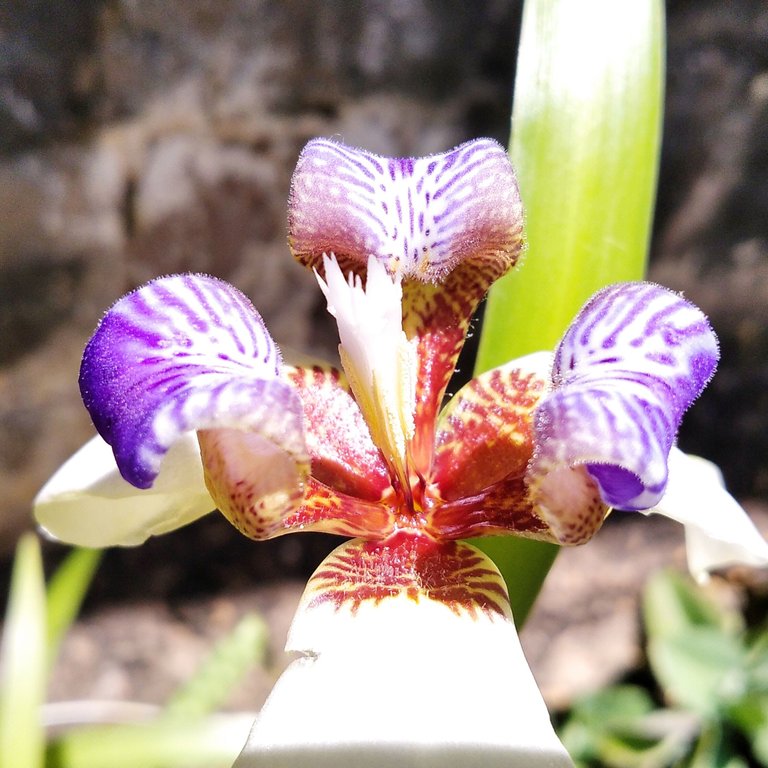
Saludos amantes de la fotografía y la naturaleza
Greetings photography and nature lovers
En el mundo existen muchas flores con una forma extraña, y precisamente esta característica les da originalidad y belleza. Esta flor que tuve la oportunidad de fotografiar, a primera vista, sus pétalos interiores de color púrpura con destellos blancos, por alguna razón me pareció similar a la forma cóncava de una cobra, por lo que llamó mi atención, así como la belleza de sus colores; esta planta es conocida como, Neomarica gracilis.
In the world there are many flowers with a strange shape, and precisely this feature gives them originality and beauty. This flower that I had the opportunity to photograph, at first sight, its purple inner petals with white sparkles, for some reason seemed to me similar to the concave shape of a cobra, so it caught my attention, as well as the beauty of its colors; this plant is known as, Neomarica gracilis.
Sin embargo, cada persona tiene una forma diferente de distinguir la forma de esta planta, por lo que se le han atribuido diferentes nombres comunes en distintas partes del planeta; y detrás de cada nombre hay una explicación que es realmente interesante.
However, each person has a different way of distinguishing the shape of this plant so it has been attributed different common names in different parts of the planet; and behind each name there is an explanation that is really interesting.
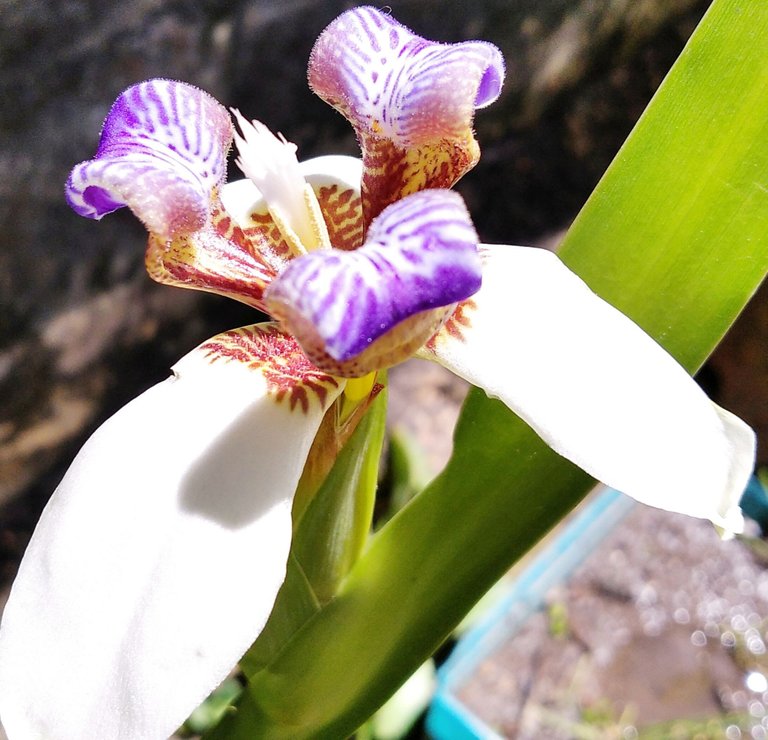
En algunas partes se la conoce como Lirio de abanico, por el aspecto de sus hojas en forma de espada que forman un abanico de verdor. Otro nombre que recibe, es el de Planta Apóstol, debido a la creencia de que la planta necesita doce hojas para florecer.
In some parts it is known as Fan lily, because of the appearance of its sword-shaped leaves that form a fan of greenery. Another name it receives, is that of apostle plant, due to the belief that the plant needs twelve leaves to bloom.
Como se puede ver sus flores tienen un gran parecido a un cruce entre una orquídea y un lirio, por lo que en base a esta flor se creó otro nombre común, Orquídea del PobrePobre y también Falsa Orquídea.
As you can see its flowers have a great resemblance to a cross between an orchid and a lily, so based on this flower was created another common name, Poor Man's Orchid and also False Orchid.
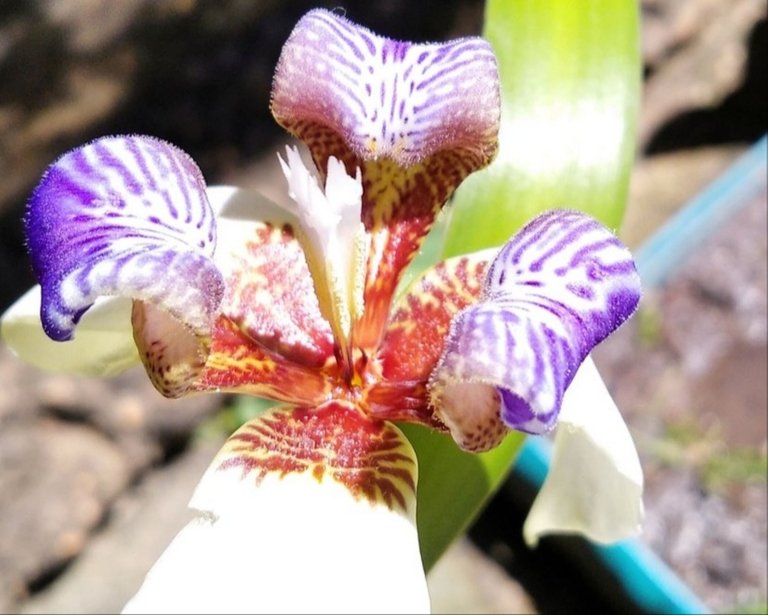
Scientific name: Neomarica gracilis Order: Asparagales Class: Liliopsida Family: Iridaceae
Nombre científico: Neomarica gracilis Orden: Asparagales Clase: Liliopsida Familia: Iridaceae
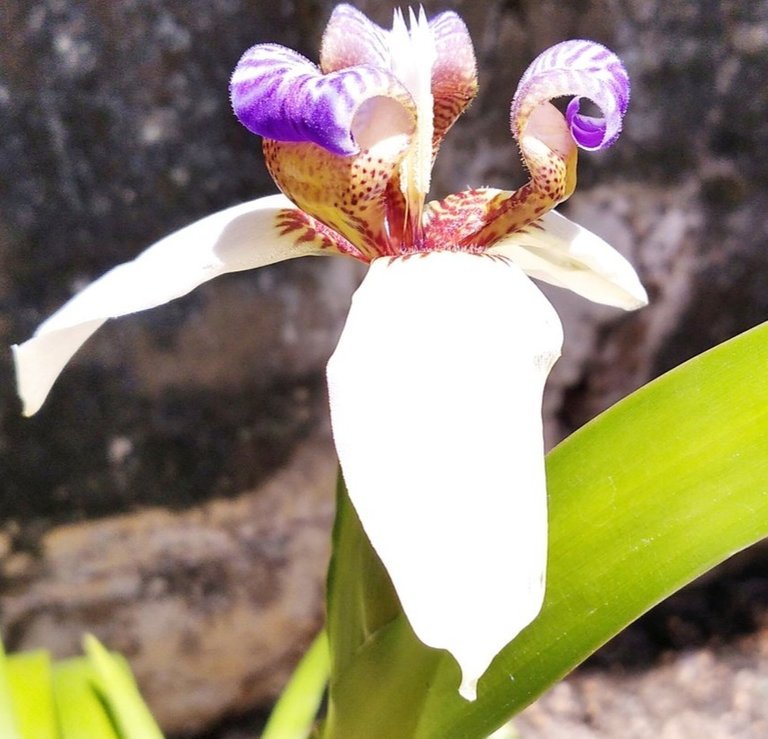
Una característica destacada es que se la conoce como la planta que camina, y en base a esto recibe otro nombre por el que se la conoce, Iris Andante, por su forma de propagación. Al nacer la flor, en la parte superior del tallo hay una plántula, que se dobla hacia el suelo, por lo que echa raíces y como resultado se reproduce una nueva planta.
An outstanding feature is that it is known as the walking plant, and based on this it receives another name by which it is known, Iris Andante, because of its way of propagation. When the flower is born, at the top of the stem there is a seedling, which bends towards the ground, so it takes root and as a result a new plant reproduces.
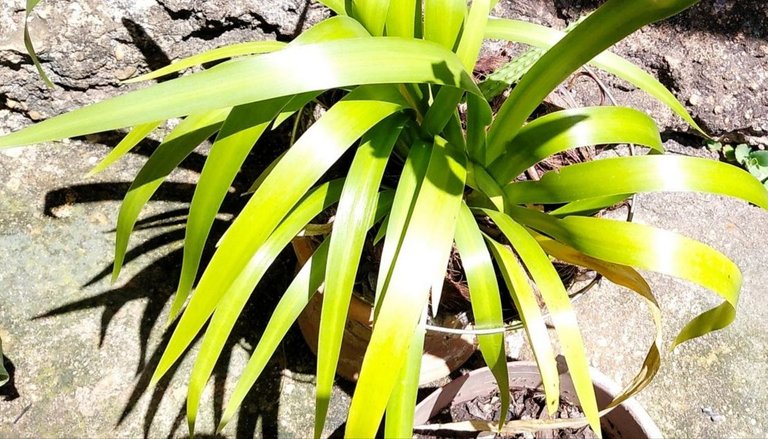
Así que se podría decir que la naturaleza tiene esta planta que camina en el paisaje circundante, sin embargo no todas las especies de ** Neomarica spp,** tienen esta forma particular de propagación, otras mantienen su tallo en el aire, lo que hace difícil de doblar y plantar.
So you could say that nature has this plant that walks in the surrounding landscape, however not all species of ** Neomarica spp,** have this particular way of propagation, others keep their stem in the air, making it difficult to bend and planting.
Esta planta es natural de las regiones tropicales de Centro y Sudamérica, lamentablemente sus flores tienen un día de vida, pero florecen durante un mes, tiempo en el que se produce su floración, especialmente durante la primavera.
This plant is natural, from tropical regions of Central and South America, unfortunately its flowers have one day of life, but bloom for a month, time that occurs its flowering, especially during the spring.

La forma de cultivar esta planta es sencilla, ya que puede reproducirse en sitios con sombra total o parcial, además de tolerar varios tipos de suelo y prosperar en lugares húmedos. Es una hermosa planta a tener en cuenta si quieres ver sus hojas y flores, paseando por todo tu jardín.
The way to grow this plant is simple, as it can reproduce in sites with full or partial shade, besides tolerating various types of soil and thrive in moist places. It is a beautiful plant to consider if you want to see its leaves and flowers, walking all over your garden.
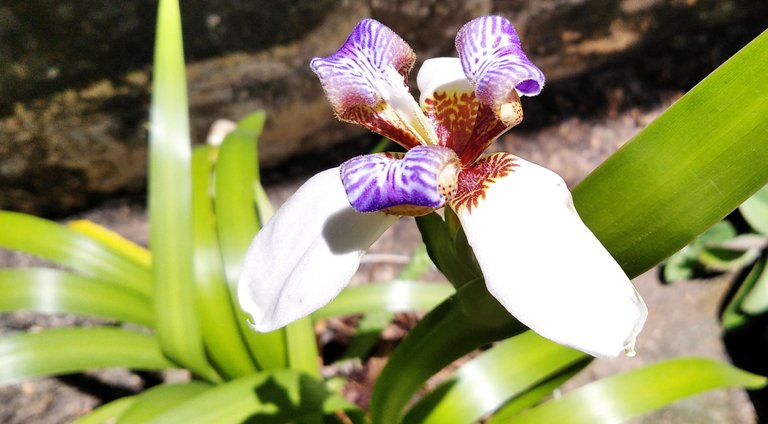



Referencias Bibliográficas / Bibliographic references:
Consulta plantas. Neomarica gracilis o Alirio Caminante. Disponible en: enlace
EcuRed. Neomarica gracilis. Disponible en: enlace
Walking Iris or Apostle Plant. Neomarica gracilis Characteristics Disponible en enlace
Las fotografías son de mi propiedad, capturadas con la cámara del celular Xiaomi Redmi 8.
The photos are my property, captured with the camera of the Xiaomi Redmi 8 cell phone.
Traducción realiza en la página web DeepL
Translated using the website DeepL

Su post ha sido valorado por @goya
Muchas gracias por su visita y valoración 🙏🙌
Thank you very much for your visit and support🙌🙏